The Essential Guide to Teaching Compound Words

Compound words are formed when two smaller words combine to form a new word, as in these examples:
mail + box = mailbox
milk + shake = milkshake
note + book = notebook
The resources in this article can help you introduce compound words to your children and make them feel like superheroes for being able to read and spell such long words!
What Is a Compound Word?
Compound words can be lots of fun for young readers and spellers. And they are easier to tackle if we think of compound words as two smaller words that are combined to form a new word.
But there’s another important thing to consider when teaching compound words!
When deciding of a word is a compound, remember that the meaning of the compound word relates to the meanings of the two words that combine to form it. For example, a bathtub is a tub you take a bath in. A sandbox is a box you put sand in. An anthill is a hill made by ants, and so on.
Download This Free List of Compound Words
This big list of kid-friendly compound words will be a great resource as you work on this skill together.
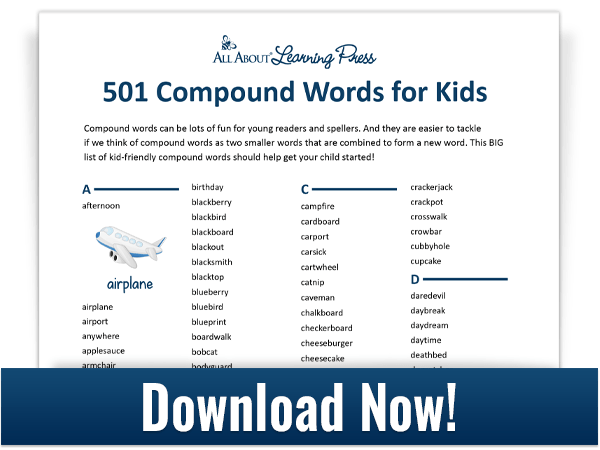
Teach How to Look for the Two Smaller Words in the Compound Word
The easiest way to introduce compound words is with letter tiles. Choose a word such as bathtub from the resource list and build it with the tiles.

Explain to your child that the word bathtub has two smaller words in it, and invite him to find those two smaller words. Letter tiles are great for this activity because your child can separate the compound word into two words, like this:

Suddenly, longer words are no longer scary! See why I love letter tiles so much? You can practice this concept with fun words like sandbox, anthill, backpack, and windmill. This is a wonderful method for helping students visualize the words that form compound words.
Games and Activity Sheets for Compound Words
Hands-on games and activities make learning about compound words more fun! Here are three free printables that you can use with your child. The first two activities come from All About Reading Level 1, and the third activity was designed for all reading levels.
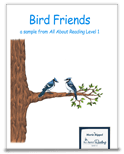
Birds of a feather flock together … and in this fun reading activity, birds of a feather make compound words, too! Just have your child select two matching birds and place them side by side on the branch. Each pair of birds makes a compound word!
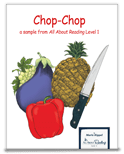
Practice compound words with this fun (and safe!) chopping game! Just cut out the knife and the foods, then let your child “chop” each compound word between its two smaller words. Read each smaller word, and then read the compound word.
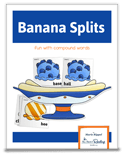
Use compound words to build the yummiest banana split ever in this delicious multi-level reading game. Every player gets an ice cream bowl and a stack of candy covered scoops of ice cream to play with. And the best part? Students of different levels can play together!
Spelling Tips for Compound Words
When your child is spelling, it may not be obvious when to combine two words into one. This process is made more difficult by the fact that there are actually three kinds of compound words. There are closed compounds, which we have been discussing in this article so far. And then there are open compounds and hyphenated compounds.

If your child needs to spell the word ice cream, for example, there is no rule that will help her decide whether this is a closed or open compound word. She’ll just need to determine what “looks right,” and the only way to do that is to have seen it in writing before (preferably multiple times). The Practice Sheets in All About Reading and the Word Banks in All About Spelling are excellent tools to do just that.
Of course, reading word lists isn’t all that exciting. Reading a short story about a sassy cat, on the other hand, is a much more engaging way to practice reading compound words! Here’s the first story with compound words that beginning readers encounter in All About Reading Level 1.

Cobweb the Cat short story
In this story, young readers encounter fourteen different closed compound words, including bathtub, catfish, and sunset. All of these words are pre-taught through various activities, so even before reading the story, the child has already become familiar with them.
The more times your student sees compound words in print, the easier it will be for him to spell them. And that leads us to our final tip for teaching children to spell compound words…
Provide Oral “Hints” During Spelling Dictation
To increase your child’s awareness of compound words during spelling dictation, provide prompts such as “This next sentence has a compound word.” After your child sees closed compound words in print a number of times, he’ll begin to get a sense of when to combine two smaller words into one.
The bottom line when teaching compound words is practice, practice, practice! But make practice a joy by incorporating letter tiles, activity sheets, short reading selections, and spelling dictation “hints.”
What are your favorite ways to practice compound words? Let me know in the comments below!




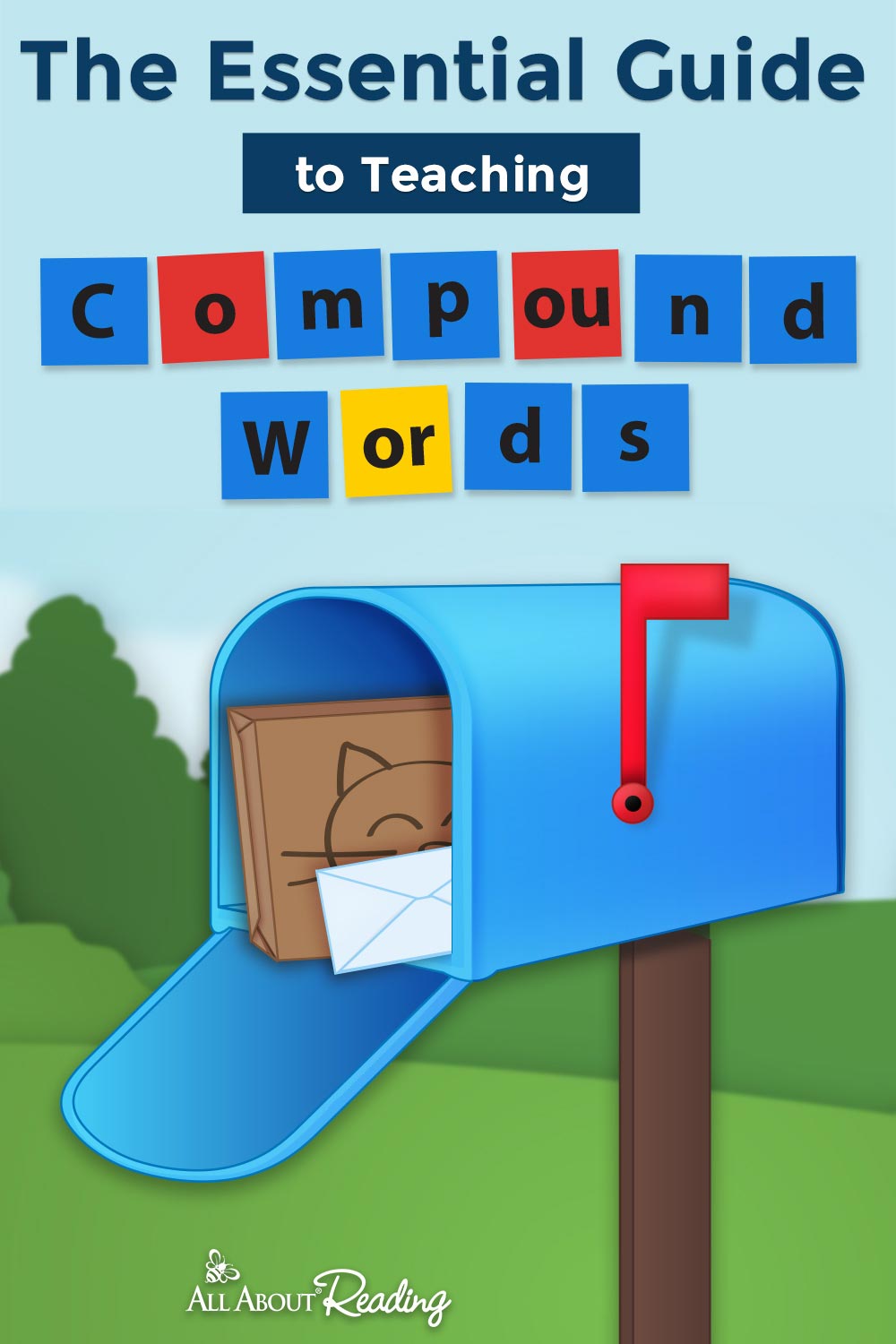









Julie
says:We did not cover all of the lessons in AAR Level 2. As a matter of fact, not even half. I sold it, so no longer have the teacher’s manual, student activities, etc. Last year, I happened to have printed the contraction lesson for Level 2. It was just discussed on Lesson 4 (?) of level 3. Where can I locate the Compound Words syllable division rule, please?
Robin
says: Customer ServiceJulie,
Do I understand correctly that you have All About Reading Level 3? You will find the Syllable Division Rule chart in the Teacher’s Manual Appendix E page 397. This chart was also in the Activity Book on pages 17 and 18 for easy removal and so you can hang it up for easy reference. The rule for dividing compound words is the first one on those charts. In addition, you will find a review of the rule for dividing compound words in Lesson 1 of All About Reading Level 3, on page 38.
However, if I misunderstand and you do not have All About Reading Level 3, or if you would like to print the Syllable Division Rules chart, you can find it in the online sample for the AAR 3 Teacher’s Manual.
If you need additional help for compound words, please let me know what the difficulty is.
Sophie
says:This was great. We enjoyed Cobweb’s story
Robin
says: Customer ServiceThank you, Sophie!
Jan joscelyne
says:Brilliant
Robin
says: Customer ServiceThank you, Jan!
Joanie Burns
says:Thank you for this handy dandy list of compound words! I use AAS and AAR with my students, and I love them both!
Robin
says: Customer ServiceYou’re welcome, Joanie! I hope you find this list helpful.
Emmanuel Chukwuka Odo
says:Very good platform for teachers and learner’s.
Robin
says: Customer ServiceThank you, Emmanuel!
Shirley A Scruggs
says:Good Show
Robin
says: Customer ServiceThank you, Shirley!
Laxman Rathod
says:Good technique for reading, this technique apply in my school
Robin E.
says: Customer ServiceI hope you find this resource helpful for your school!
Maria
says:Fun and simple so interesting we highly appreciate
Robin E.
says: Customer ServiceI’m glad you appreciate this. Thank you, Maria!
aseesa
says:I had difficulty on how to teach spelling using compound words that are not affixes and your blog is wonderful/ Thank you so much.
Robin E.
says: Customer ServiceI’m glad this was helpful for you, Aseesa!
Deb Johansen
says:Love this blog post and the list. Thanks so much for sharing!
Mr. Blamo M. Blamo Jr
says:Thanks for introducing the types of compound words to me.
I really do appreciate.
Hopping to learn more from you.
Robin E.
says: Customer ServiceYou’re welcome.
Mohsen
says:Great list! Thank you so much.
Robin E.
says: Customer ServiceYou’re welcome, Mohsen!
Areata Knight-Mitchell.
says:Thanks Marie . These methods came in very handy.
Robin E.
says: Customer ServiceYou’re welcome, Areata. It’s great to hear these are handy.
ALICE
says:i have taught compound words many years but i absolutely love the terminology that you just gave me: open, closed, and hyphenated compounds!!!!!!!!!!!!! thanks and excuse the lowercase typing please?
Robin E.
says: Customer ServiceI’m glad this was helpful for you, Alice!
Nese
says:Love the list of compound words. This will help my daughter with her test later this week at school!
Robin E.
says: Customer ServiceI’m glad this is helpful for your child, Nese!
Chidiebere chizobam
says:So interesting.an glad.
Charmaleta
says:Such an excellent resource! Easy to use and makes learning fun. Thanks Elizabeth
Robin E.
says: Customer ServiceThank you, Elizabeth! I’m glad to hear this was easy to use and fun.
Elizabeth H.
says:What a great download!
Robin E.
says: Customer ServiceThank you, Elizabeth! Glad you like it!
LaVerne Traynham
says:I love the list of compound words!!
Robin E.
says: Customer ServiceThanks, LaVerne!
RKM
says:This program makes learning fun for kiddos (and I’ve learned some ‘rules’ too)!
Robin E.
says: Customer ServiceThank you, RKM!
Melanie Ray
says:Great info and resources! Thank-you!
Janine Zamora
says:My son loves all the fun activities that AAR has. It makes learning fun.
Elnita
says:Great info! Thanks for the resources. Will definitely try it out.
Robin E.
says: Customer ServiceYou’re welcome, Elnita.
Ammy
says:This makes it fun and engaging for the students! I love a multisensory approach to compound words: clapping each word and using a motion to represent the combination.
Robin E.
says: Customer ServiceThank you, Ammy. Multisensory learning is very effective.
Jodi
says:Thank you for the great insights and resources!
Melanie O'Brien
says:We are currently using BJU’s reading, phonics, and language arts programs. Do you know if this will replace phonics and language arts (required in my state) or just reading? Thank you.
Robin E.
says: Customer ServiceGreat question, Melanie!
All About Reading will cover phonics and reading, as well as vocabulary and comprehension.
The term “Language Arts” is a sort of catch-all term that encompasses everything to do with English, from a preschooler learning the ABCs to high schoolers doing detailed written literary analysis and public speaking. I think you may find our blog post on the scope of Language Arts helpful.
With that in mind, All About Reading, with possibly a handwriting curriculum if needed, will cover “Language Arts” for young learners just beginning to read. Once students are well started in reading (after finishing Level 1 or the equivalent reading level), All About Reading with All About Spelling and possibly handwriting will cover Language Arts.
All About Spelling has a gradual progression for increasing the student’s stamina and fluency in writing that is very helpful for beginning writers. It starts with just words and short phrases in Level 1, bumps up to phrases and short sentences in Level 2, and progresses to 12 dictation sentences per step in Level 3. Partway through this level, the Writing Station is introduced. In this exercise, students write their own sentences that they make up using some of their spelling words.
At around Level 3 of All About Spelling, students are ready for writing and grammar curriculums. Once a student has mastered reading (after All About Reading Level 4), they are ready to delve into literature and a wide variety of genres.
I hope this helps. If you have questions or want help deciding what your child needs to be working on, let me know your child’s age and abilities in reading and spelling.
Melanie O'Brien
says:Thank you so much! I took a look at the placement test and ordered Level 1. From everything I have seen, I think this will work much better for us. Do you think the spelling should be started with reading level 1? Does it have to be done at the same time? My plan is to see how the reading goes before I order spelling. It also gives me a chance to save for the spelling.
Robin E.
says: Customer ServiceMelanie,
We generally recommend waiting to begin All About Spelling until the student has finished All About Reading level 1 or the equivalent reading level. We discuss this on our The Right Time to Start Spelling blog post.
Adila Nawaz
says:Coloring coding seems like a really neat idea to identify sounds.
Robin E.
says: Customer ServiceThank you, Adila!
Megan Santini
says:Wow- so many ideas and resources! Thanks!
Robin E.
says: Customer ServiceYou’re welcome, Megan!
Debbie Wright
says:Awesome website. thanks for the information
Robin E.
says: Customer ServiceYou’re welcome, Debbie! I’m glad you like it.
Jess Tomlin
says:Love this program
Robin E.
says: Customer ServiceThank you, Jess!
Amber
says:I love all the fun activities provided here!
Robin E.
says: Customer ServiceThanks for letting us know you appreciate the activities, Amber!